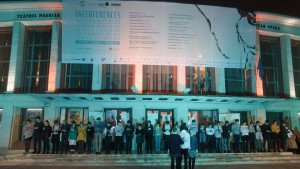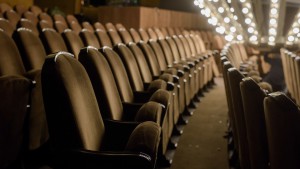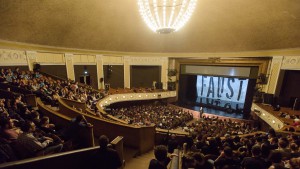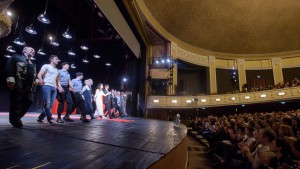The Stranger’s Odyssey. Who am I, really?
The fifth edition of the Interferences international theatre festival (for the fourth time in cooperation with the UTE), which was held over 11 days at the end of November and the beginning of December at the Hungarian Theatre in Cluj, staged productions from 14 countries, by means of which the organizers aimed to present contemporary trends in drama. In addition to the predominantly Eastern European works, the audience had the opportunity to see a performance given by South Korea’s Jaram Lee, who had appeared at the festival in previous years, and the J.U.S.T. Toys Production from the USA.
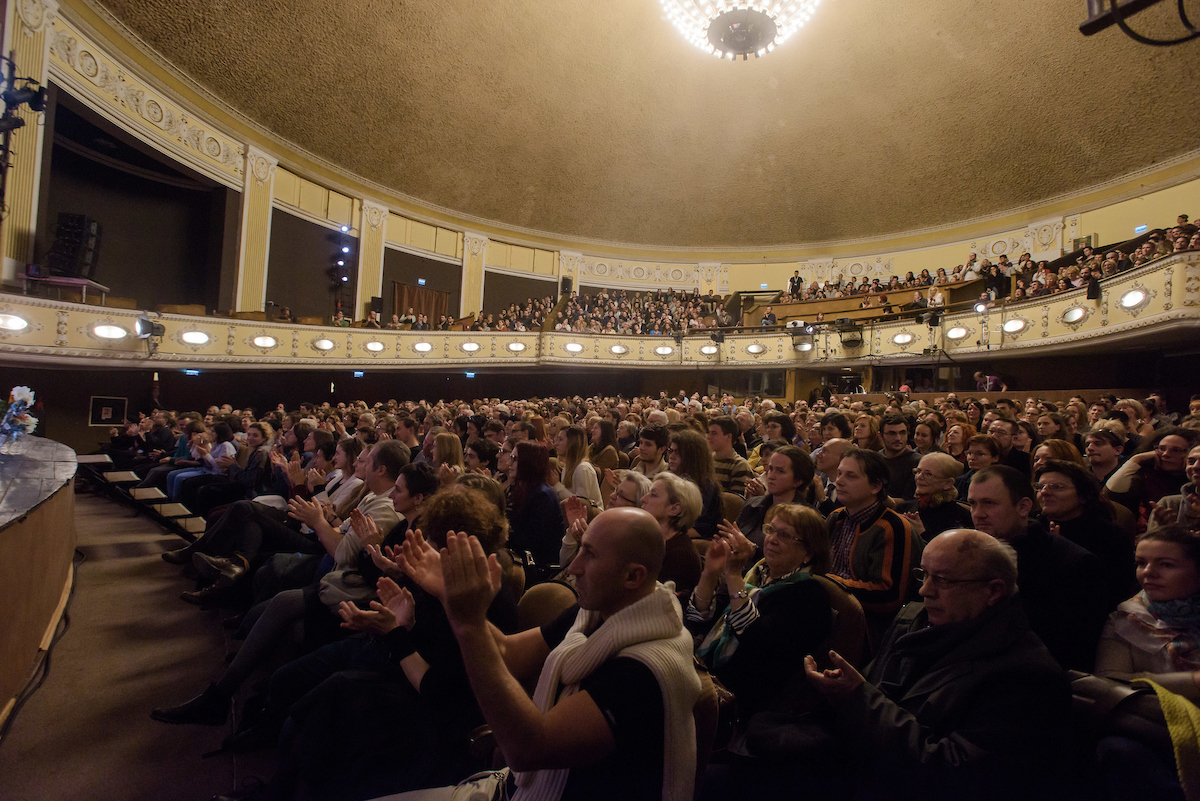
Since the first edition, in 2007, primarily focused on establishing an inter-culture dialogue over the long term, the festival programmes have centred on clearly formulated themes.
Following the seeking of the common roots of theatre and music, the phenomenon of the body and physicality, this year the organizers concentrated on a current social issue – difference, or diversity.
Even though the festival’s secondary title, The Stranger’s Odyssey, obviously alluded to the ongoing migration wave, the programme directors’ intention was to view otherness in a variety of forms and contexts.
The word strange harbours several meanings. It may refer to an individual’s visual or personal distinctions, which make him/her surpass the standard. Connected with this is the individual’s position among and relationship to the majority society. Irrespective of the person’s particular qualities being regarded positively or negatively, and his/her being spurned or, vice versa, put on the pedestal of the recognised values, the person’s social status explicitly differs from that of the others.
A prime example of the ambivalence contained in the word strange is the character of Shen Teh in Bertold Brecht’s play The Good Person of Szechwan. First, the young prostitute is ejected to the margins of society because of her profession; later on, owing to her moral purity. Although spurned by the gods and people alike, Shen Teh represents an exception confirming the strength of the human spirit. Perhaps that was the reason why Brecht’s play featured in the festival in Cluj twice – first in a production directed by Romania’s Andrei Șerban (Teatrul Bulandra in Bucharest), and then in an adaptation by Michal Dočekal, the current President of the Union des Théâtres de l’Europe (UTE), Director of Drama at the National Theatre in Prague and a freelance director.
Dočekal’s piece of theatre, staged with the actors of the Vígszínház theatre in Budapest, was heralded as being the apex of this year’s festival programme. The three-hour-long performance abounded with theatrical ideas and scenographic effects, which incessantly assaulted the audience’s attention and maintained tension, yet in the final form were actually wearisome. Martin Chocholoušek’s sets, dominated by a movable interior with a projection screen, fiercely transformed with every new scene. Similarly varying were Kateřina Štefková’s costumes, which the actors continuously changed, as the roles were taking turns. The scaffolding, conveyor belts, dining tables, shooting cannons and suspended desks with lamps, splashing real water, served to demonstrate the maximum utilisation of stage technology, straddling purposeless self-presentation. For all that, the spectacular setting did not lack visual uniformity and integrated form, which, however, was not the case of the dramatic means. The creators wittingly employed Brechtian cutting and distinguishing between the character forming and the actor’s critical commentary, yet they failed to adhere to the chosen principle throughout the performance. Accordingly, the individual scenes were abandoned and returned to the play without evident logic. The inconsistent differentiation of the roles was the most palpable in the case of Enikő Eszenyi, who portrayed Shen Teh. The actress let herself be carried away by her own energetic involvement, which reflected in overexposed gesture and lack of co-ordinated motion. As a result, Shen Teh did not come across as a moral example, but a caricature of herself. In the final analysis, the performance oscillated between epic theatre, an ironised version of the original play, and a scenic spectacle devoid of a clear-cut staging vision.
Totally different in form was the production Stranger’s Song, based on Gabriel García Márquez’s Bon Voyage, Mr. President. The tale of a poor married couple and a dying statesman was depicted using pansori, the traditional Korean genre of musical storytelling. The narrative nature of Asian theatre and its blending of playfulness and specific technical execution inspired the European avant-garde, including Brecht’s epic theatre. In the case of Stranger’s Song, the audience’s experience entirely depended on Jaram Lee’s precise work with her voice and movement co-ordination. The performer stylised herself into several personages, expressed by means of effective gestural contraction (a hunched pose, erect or cautious gait), without forfeiting observational distance or the awareness of her being in the role of the narrator. Jaram Lee was accompanied on the almost empty stage by two musicians, whose aim was to provide rhythmic underpinning to the drift of the narration.
In my opinion, Stranger’s Song was the zenith of the final third of the festival programme. Owing to its minimalistic, precisely built theatrical form, as well as its title, it most closely expressed the festival motto – otherness was viewed through the lens of a forlorn young couple who, notwithstanding their poverty and low social status, retain a high degree of morality, and through the eyes of a privileged politician, who rediscovers his humanness in the twilight of his days. The two seemingly incompatible parties are forced to find a common parlance, by means of which they duly succeed in breaking down the established barriers. The fact that the Colombian author’s work was staged by Korean artists with regard to Western European theatre conventions represented another parallel, fulfilling the theme.
The programme selected for the fifth edition of Interferences entirely complied with the set theme. The final third of the festival agenda was dominated by productions of plays by Beckett, Gogol, Ionesco, Brecht and a theatrical remake of Lars von Trier’s Breaking the Waves, whose characters are generally perceived as embodiments of otherness, external and personal deformation, the individualised (and problematical) self. The organisers’ endeavour to place the festival within the context of the current society-wide processes, whereby the meaning of the word strange must be constantly redefined, was more than welcomed. All the more striking, however, was the mediocre quality of some of the selected productions, which many a time only superficially illustrated the original literary or film work, instead of seeking a peculiar theatrical key.
(Days reviewed: 2 – 4 December 2016)
Translated by Hilda Hearne
Published on 16 December 2016 (Article originally written in Czech)
